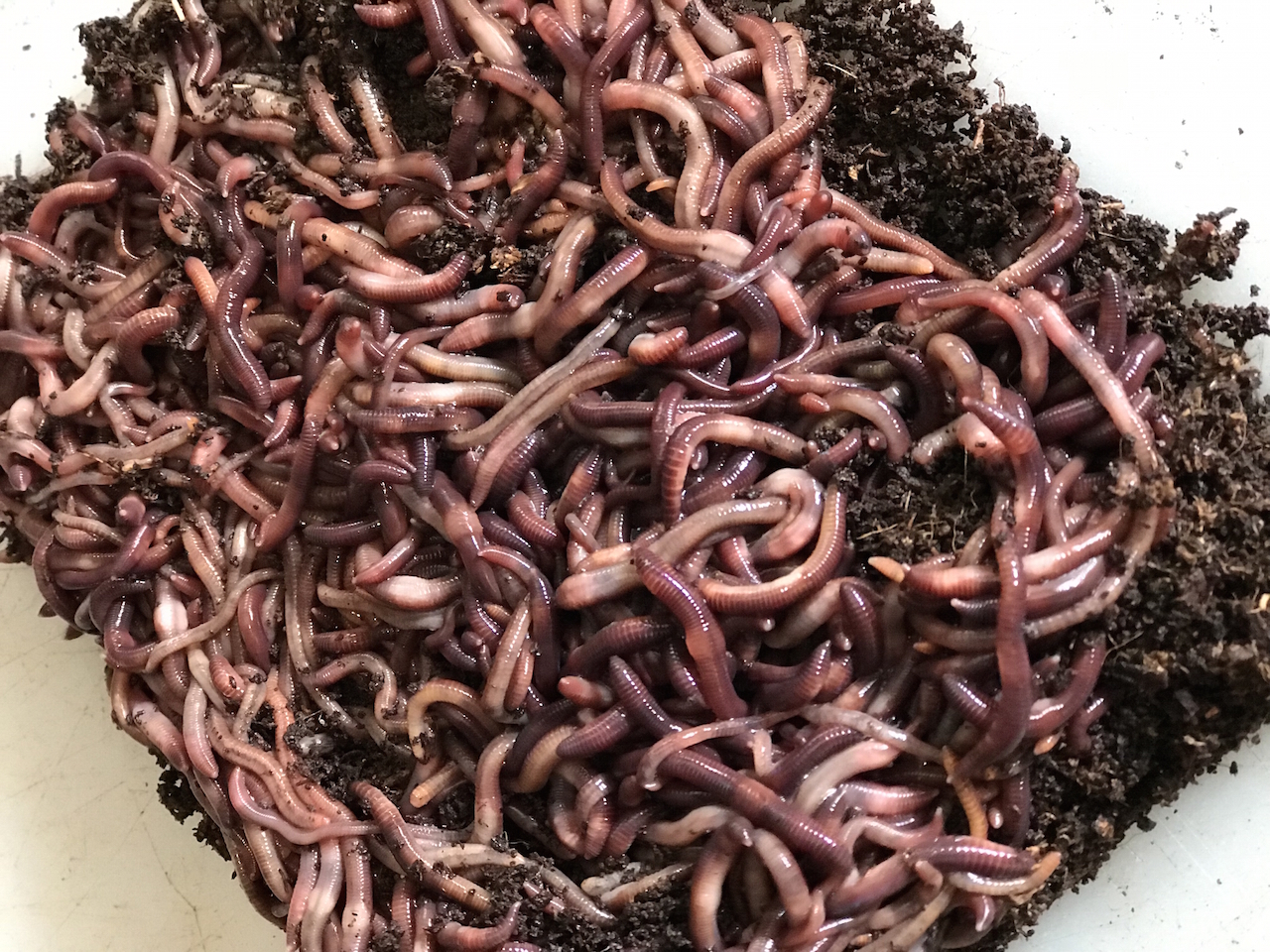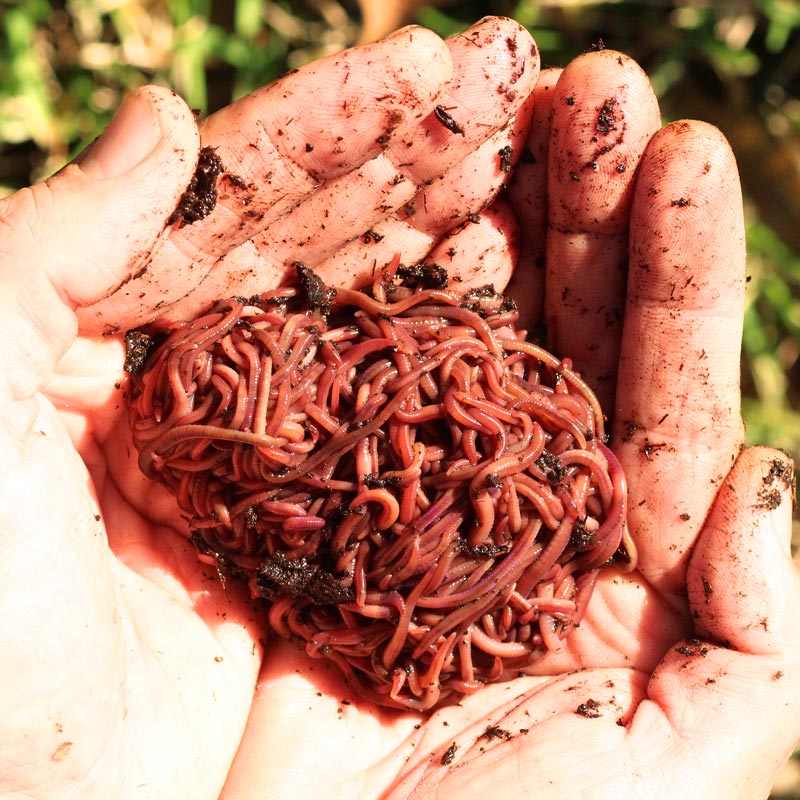Organic Composting with Red Wiggler Worms - Increase Your Garden's Growth
Organic Composting with Red Wiggler Worms - Increase Your Garden's Growth
Blog Article
Making The Most Of the Advantages of Red Wiggler Worms: A Comprehensive Handbook for Home Gardeners and Urban Farmers
In the realm of sustainable gardening methods, red wiggler worms stand as unhonored heroes, quietly changing organic waste right into nutrient-rich castings that can function marvels for soil health and wellness. As home garden enthusiasts and metropolitan farmers increasingly seek eco-friendly and cost-effective means to enhance their gardens, the potential advantages of harnessing the power of red wigglers can not be overstated. From decreasing kitchen waste to cultivating healthier plants, the use of these modest creatures provides a plethora of advantages. By checking out the details of how to efficiently take care of and make the most of the benefits of red wiggler worms, people can open a wide range of possibilities for improving the sustainability and productivity of their gardening ventures.
Comprehending Red Wiggler Worms
Red Wiggler worms, renowned for their effective composting capacities, are a varieties of earthworms extensively utilized in vermiculture methods. These worms, clinically understood as Eisenia fetida, grow in decomposing natural product, making them ideal candidates for composting.
One key attribute of Red Wiggler worms is their reproductive price. These hermaphroditic animals have both male and women reproductive body organs, enabling them to replicate rapidly under desirable conditions. A mature Red Wiggler can generate multiple offspring in a brief period, making certain a steady populace within a composting system.

Establishing a Worm Container
When developing a worm container for vermiculture purposes, proper preparation and interest to information are essential for creating a helpful environment for Red Wiggler worms. Begin by choosing a suitable container for your worm bin.

Location the worm bin in a trendy, dark place away from straight sunlight and severe temperature levels. Consistently keep an eye on the moisture degrees, adding water if the bed linens feels dry or half-cracked. Feed the worms a balanced diet regimen of fruit and vegetable scraps, avoiding citrus fruits, onions, and spicy foods. By adhering to these steps, you can establish a growing worm bin that will successfully process natural waste into nutrient-rich vermicompost for your yard.
Feeding and Maintaining Worms
Making sure a well balanced and nourishing diet is essential for the health and wellness and efficiency of Red Wiggler worms in a vermiculture system. It is crucial to stay clear of feeding them citrus fruits, onions, garlic, milk items, meat, and oily foods as these can be harmful to the worms or trigger undesirable odors in the bin.
Appropriate wetness degrees are likewise essential for the health of Red Wiggler see this website worms. The bed linens needs to seem like a wet sponge, giving enough moisture for the worms to take a breath with their skin. Consistently inspect the dampness levels and adjust by including water or dry bedding material as needed. Additionally, keeping correct temperature level problems between 55-77 ° F(13-25 ° C )will ensure optimum worm task and reproduction. By vigilantly monitoring their diet regimen, dampness, and environmental conditions, home garden enthusiasts and metropolitan farmers can sustain a healthy and effective Red Wiggler worm populace for composting functions.
Collecting Worm Spreadings
To efficiently remove nutrient-rich worm castings from the vermicompost, a systematic harvesting process is necessary for making best use of the composting benefits. The initial step in gathering worm spreadings is to encourage the worms to move to one side of the container.
After the castings have been gathered, it is important to divide click for more info any kind of staying worms from the spreadings to stay clear of harming them during storage space or application. One reliable technique is to create cone-shaped stacks of spreadings under intense light. Worms will instinctively move far from the light, permitting simple splitting up and elimination.
Lastly, the harvested worm castings must be stored in a great, dark, and completely dry area to maintain their quality and performance as a nutrient-rich soil amendment. By complying with these actions, home garden enthusiasts and urban farmers can make the most of the advantages of red wiggler worms in their vermicomposting systems.
Making Use Of Worm Castings in Horticulture
The incorporation of nutrient-rich worm castings right into garden dirt can considerably boost plant growth and overall soil health. Worm castings, additionally known as vermicast, are a natural fertilizer produced by red wiggler worms as they damage down raw material. These spreadings are rich in vital nutrients like nitrogen, phosphorus, potassium, and useful microorganisms that promote plant growth and improve dirt framework.
When using worm castings in gardening, it is important to mix them thoroughly into the dirt or utilize them as a top dressing around plants. The slow-release nature of worm spreadings makes certain a constant supply of nutrients to plants gradually, minimizing the danger of nutrient leaching and promoting long-lasting soil fertility. In addition, worm spreadings help improve dirt oygenation, water retention, and microbial activity, developing a healthy and balanced setting for plant origins to flourish.

Verdict
In verdict, the utilization of red wiggler worms in home gardening and urban farming can considerably benefit soil health and wellness and plant development. By understanding how to set up his response and maintain a worm bin, feed the worms correctly, and gather their nutrient-rich castings, gardeners can optimize the advantages of these earthworms.
In the realm of lasting horticulture techniques, red wiggler worms stand as unhonored heroes, silently transforming natural waste right into nutrient-rich spreadings that can function wonders for dirt health.When developing a worm bin for vermiculture functions, correct preparation and focus to information are crucial for developing a conducive setting for Red Wiggler worms. The very first step in harvesting worm spreadings is to motivate the worms to migrate to one side of the bin. Worm spreadings, likewise known as vermicast, are a natural plant food produced by red wiggler worms as they damage down natural matter. By comprehending how to establish up and preserve a worm bin, feed the worms effectively, and harvest their nutrient-rich castings, garden enthusiasts can maximize the advantages of these earthworms.
Report this page